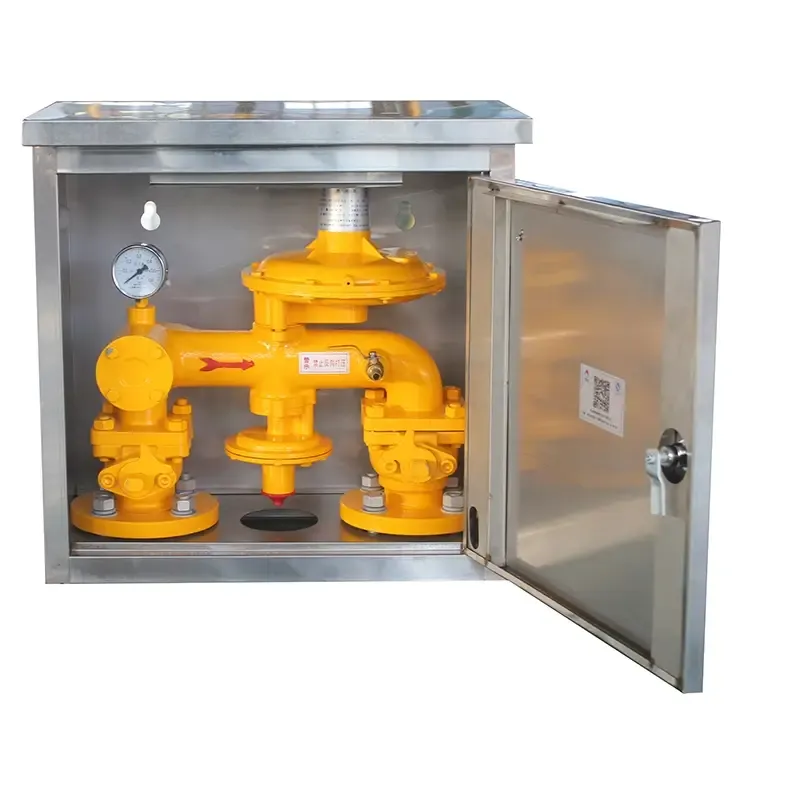
12 月 . 04, 2024 09:22
Back to list
Natural Gas Supply and Distribution Facilities Overview
Understanding Natural Gas Distribution Stations A Key Element in Energy Supply
Natural gas has become one of the most significant sources of energy in recent decades, playing a crucial role in powering homes, industries, and vehicles. One of the pivotal components of the natural gas supply chain is the natural gas distribution station. These facilities are essential for ensuring that natural gas reaches consumers safely and efficiently. In this article, we will explore the functions, importance, and operational aspects of natural gas distribution stations.
What is a Natural Gas Distribution Station?
A natural gas distribution station is a facility that regulates and distributes natural gas from high-pressure transmission pipelines to lower-pressure distribution networks. This process is vital as it ensures that consumers receive natural gas at safe pressure levels suitable for use in residential and commercial settings. Distribution stations typically include various components such as pressure regulators, metering systems, odorization systems, and safety equipment to handle the gas safely.
Functions of Natural Gas Distribution Stations
1. Pressure Regulation High-pressure natural gas is transported through extensive pipeline networks to maintain efficiency during long-distance travel. However, when it arrives at a distribution station, the pressure must be reduced to a level that is safe for residential and commercial use. Pressure regulators within the station are responsible for this task, ensuring that the gas is delivered at the correct pressure.
2. Metering and Monitoring Once the gas pressure is regulated, it needs to be measured to track consumption and billing. Metering systems at distribution stations record the volume of gas being supplied to various customers. This data is crucial for utility companies to ensure accurate billing and to monitor usage trends.
3. Odorization Natural gas is odorless and colorless in its original form, making it difficult to detect leaks. To address this safety concern, a harmless odorant, typically mercaptan, is added to the gas at distribution stations. This odor gives the gas a distinct smell, allowing consumers to quickly identify potential leaks.
4. Safety Measures Natural gas distribution stations are equipped with various safety systems to prevent accidents and mitigate risks. These may include automatic shut-off valves, fire suppression systems, and regular maintenance protocols to ensure that equipment is functioning correctly.
natural gas distribution station

Importance of Natural Gas Distribution Stations
Natural gas distribution stations play a vital role in the broader energy infrastructure. They ensure the reliability of natural gas supply, which is essential for heating, cooking, and powering appliances in homes and businesses. The transition to cleaner energy sources has also positioned natural gas as a bridge fuel, complementing intermittent renewable sources like wind and solar power. As a relatively clean-burning fossil fuel, natural gas is instrumental in reducing greenhouse gas emissions when compared to coal and oil.
Moreover, as energy demands continue to rise globally, the development and maintenance of distribution stations are crucial for meeting this demand. Efficient distribution networks help reduce wastage, enhance energy security, and support economic growth by providing reliable energy to support various sectors.
Challenges and Future Considerations
Despite their importance, natural gas distribution stations face several challenges, including aging infrastructure, regulatory compliance, and the need for modernization. Many distribution systems in developed countries require updates to ensure safety and efficiency, while in developing regions, expanding access to natural gas presents logistical hurdles.
Furthermore, the global push towards sustainability raises questions about the long-term role of natural gas in the energy mix. As more countries seek to transition to renewable energy sources, natural gas distribution stations may need to adapt by integrating new technologies, such as hydrogen blending or biogas injection, to remain relevant.
Conclusion
Natural gas distribution stations represent a critical link in the energy supply chain. Their functions in pressure regulation, metering, odorization, and safety make them indispensable for the safe delivery of natural gas to consumers. While challenges lie ahead, the importance of these facilities in supporting energy needs and facilitating a transition to a cleaner energy future cannot be understated. As we move forward, investing in and modernizing these distribution systems will be essential for achieving a sustainable energy landscape.
Latest news
-
Unlocking The Quality Gas Pressure ReducersNewsNov.01,2024
-
The Role of Gas Pressure Reducing StationsNewsNov.01,2024
-
The Importance and Functionality of Safety Relief ValvesNewsNov.01,2024
-
The Essential Role of Safety Valves in Natural Gas ApplicationsNewsNov.01,2024
-
The Essential Role of Gas Pressure RegulatorsNewsNov.01,2024
-
Enhance Your Premium Gas FiltersNewsNov.01,2024

